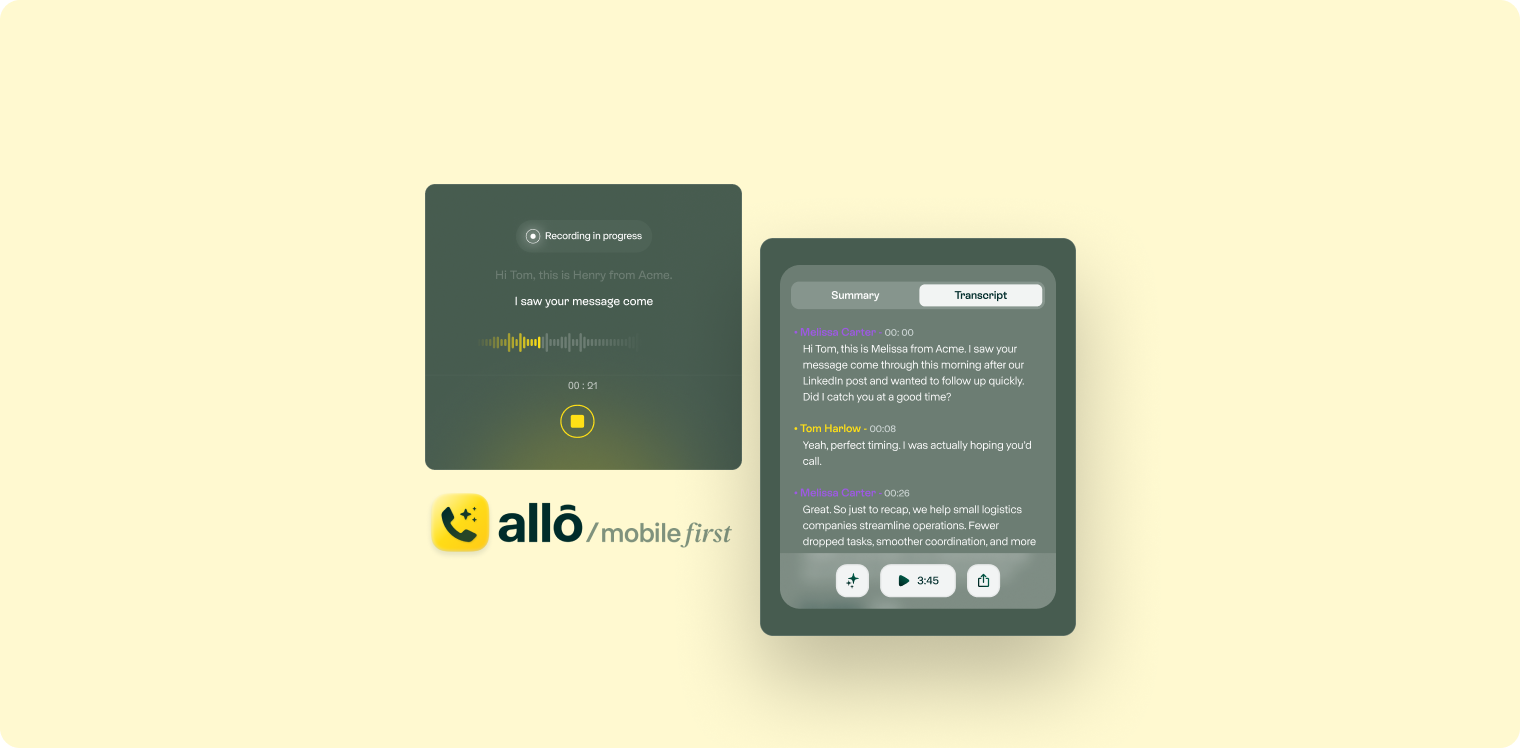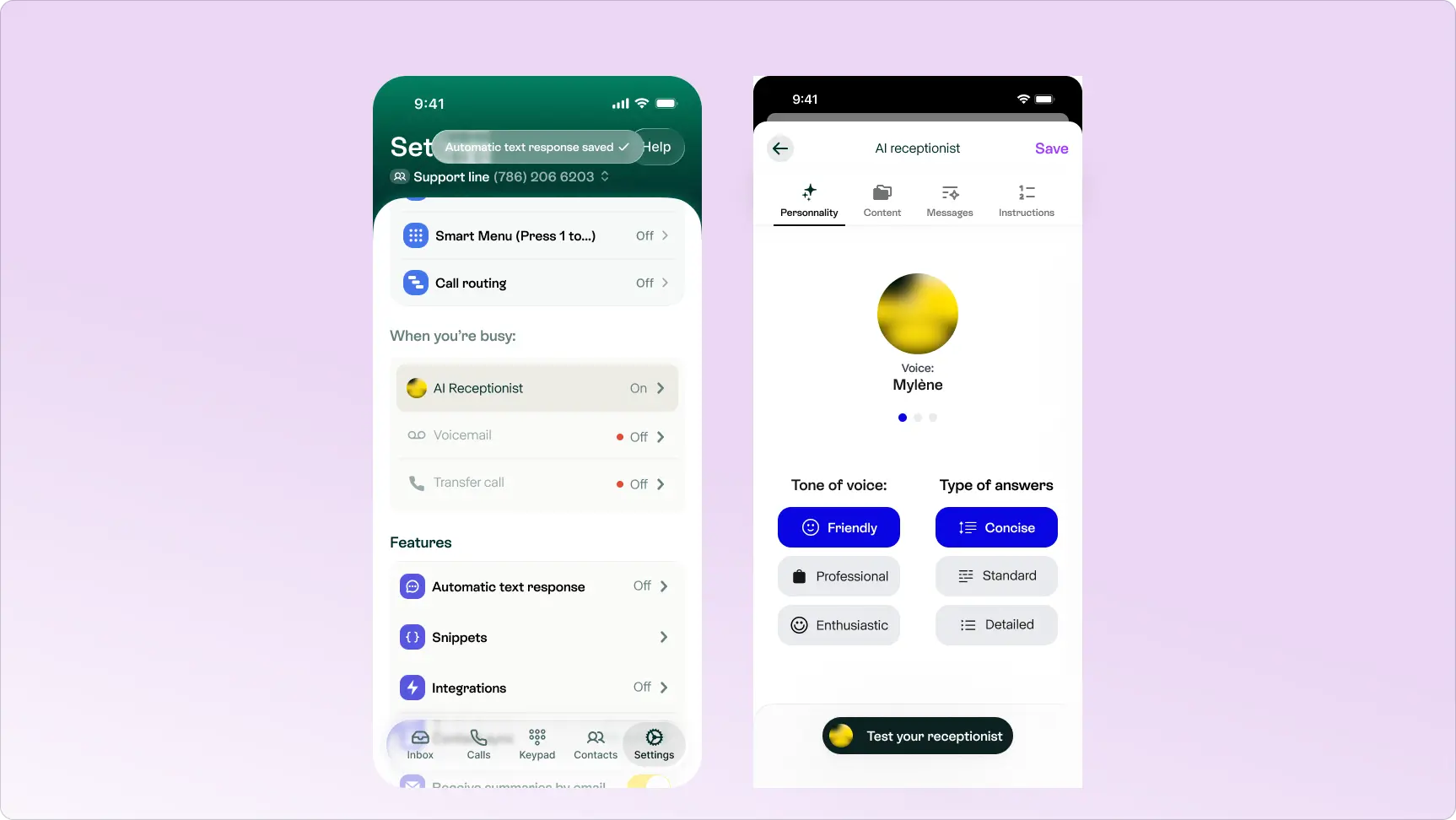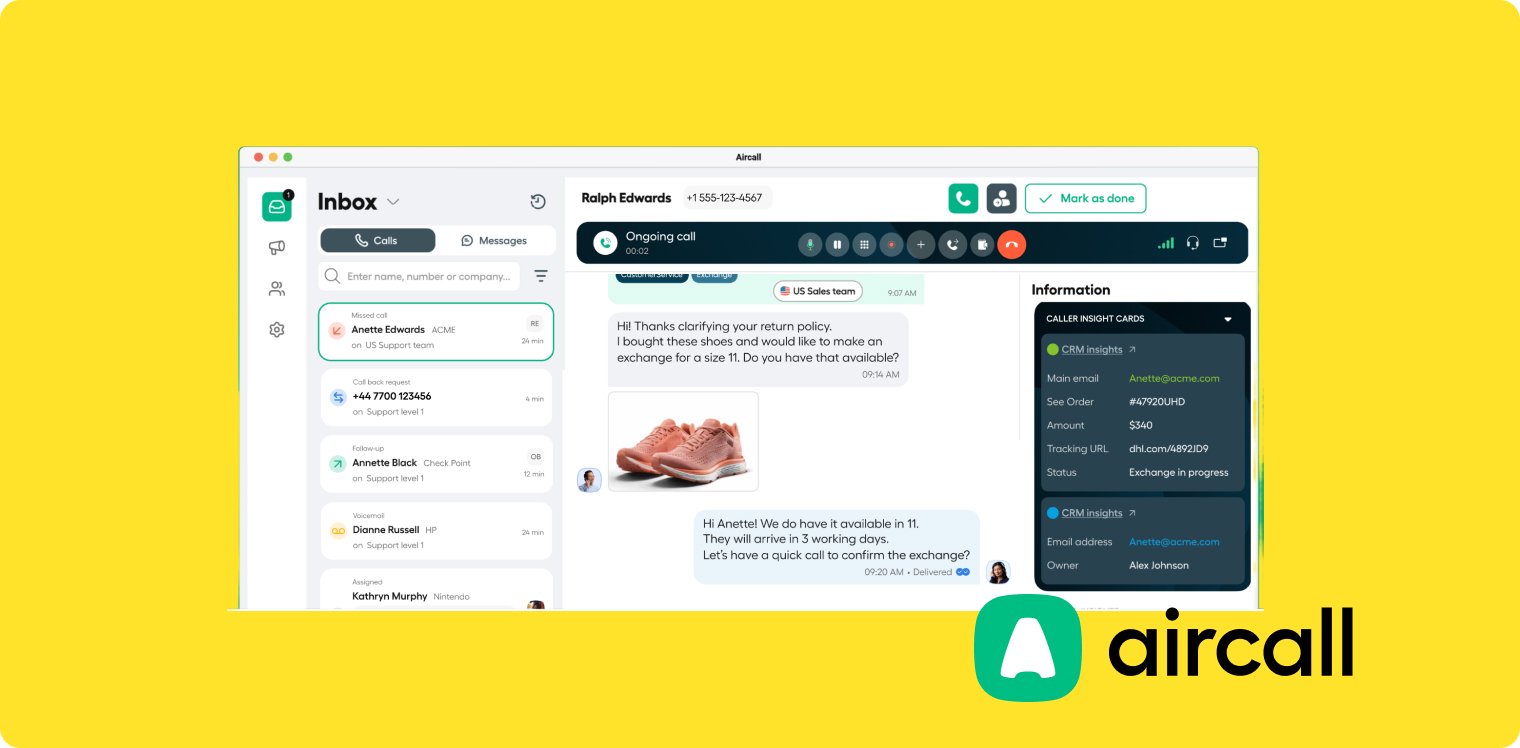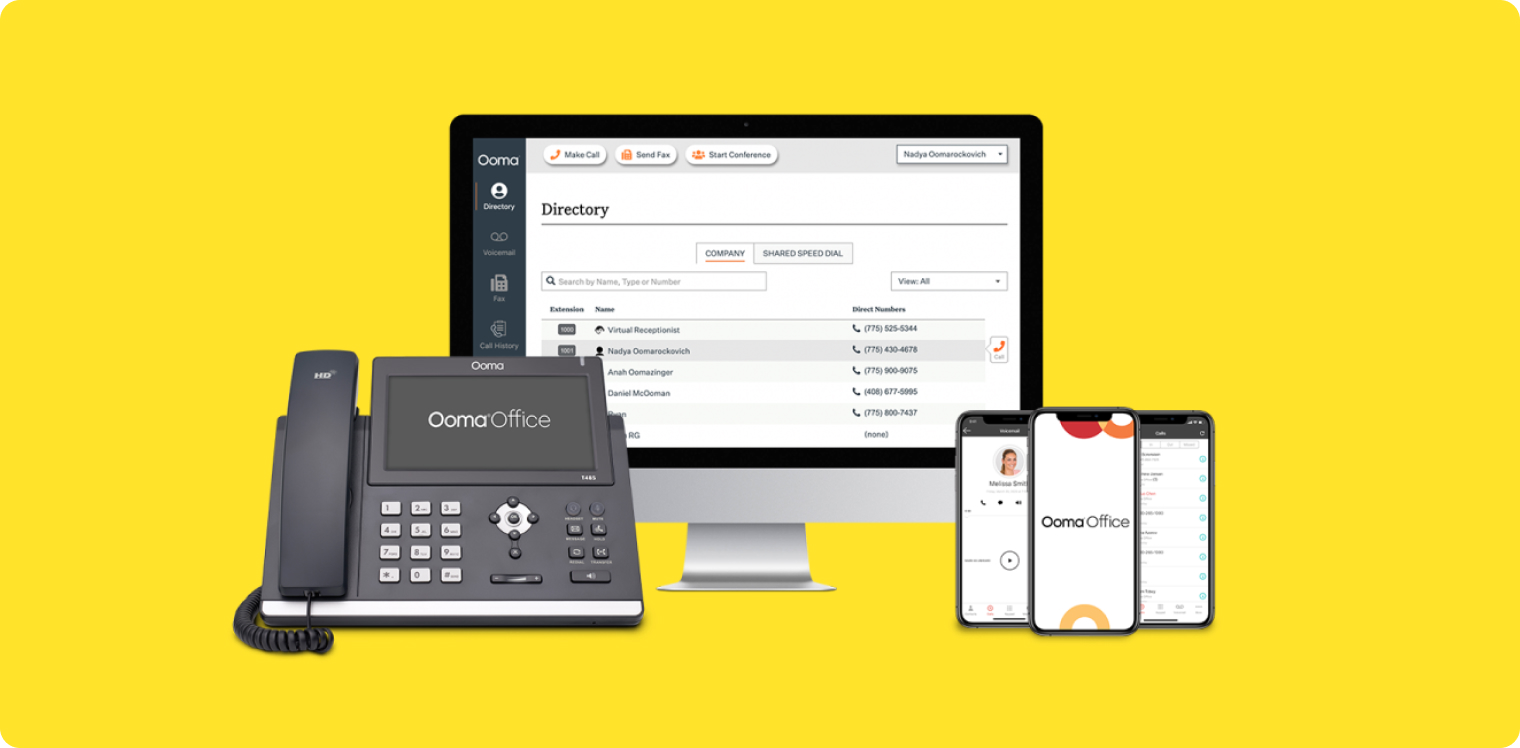If you’re here, you’ve probably Googled “Grasshopper competitors” or “Grasshopper alternatives.” And for a good reason.
Grasshopper was one of the early names in virtual phone systems for small businesses (2003). But in 2025, the product feels stuck. Prices are high, features are basic, and reviews are filled with frustrated customers trying to cancel their plans or get simple support questions answered.
So we went hands-on with the top Grasshopper alternatives and tested them like a business owner would with a tight budget, no IT team, and no time to waste.
Here’s what we found.
What Are the Cons of Grasshopper?
Speaking honestly, the biggest issue with Grasshopper is not its features, it’s the experience around it.
Customer service is almost non-existent. One reviewer on Trustpilot said: “Absolutely horrible experience and customer service. This company refuses to refund even though they charged me just yesterday for a service I haven't used in over 6 months.”
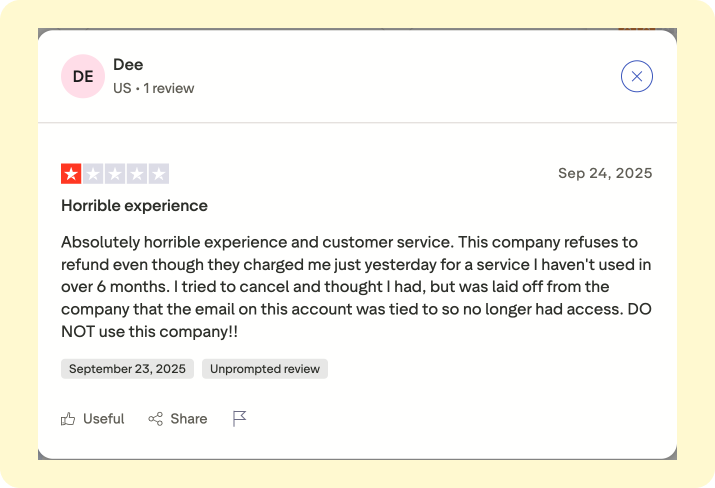
- Cancelling is a nightmare. Many users report auto-renewals and hidden hurdles when trying to end a subscription.
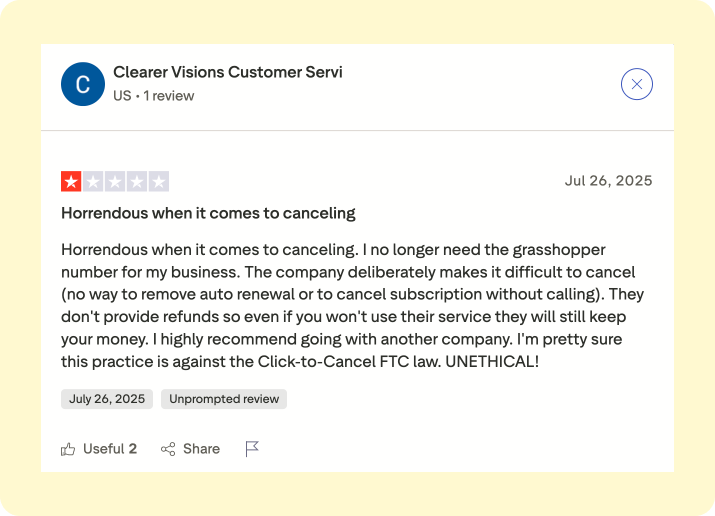
- The product feels clunky. A customer wrote: “It was impossible to get text messaging back on to my account. The AI system flags issues, and once you correct those, more issues are found.”
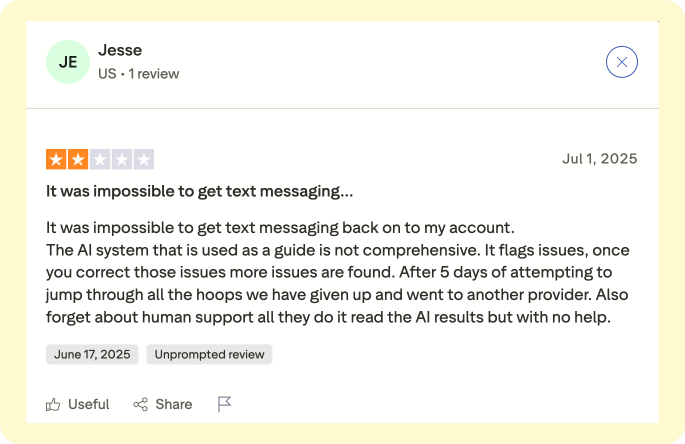
- Value isn’t there anymore. At $18–$70/month, you expect more than voicemail transcription and basic call forwarding. As one review summed it up: “The bones are there, but there's too many points of friction to get things done. Other offerings are much better.”
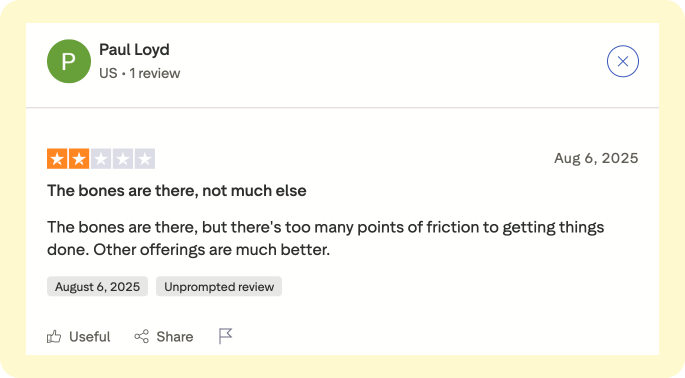
In short: Grasshopper does the job, but it feels outdated, overpriced, and frustrating to deal with. If you’re running a lean small business, you can’t afford to waste hours chasing support or fighting for a refund.
Our Selection Methodology
We’ve tested over 20 VoIP and business phone apps that position themselves as Grasshopper competitors. From that, we kept the ones that outperformed Grasshopper in at least three of the following categories:
- Pricing and Plans: How much do you pay vs. what you actually get? Transparent pricing and fair trials were a must.
- Ease of Use: Could we set up a business line in under 10 minutes, without IT support?
- Mobile Experience: Most small business owners work on the go, so it is important to be mobile-friendly.
- AI & Productivity Features: We checked if the system offered call transcriptions, summaries, or even AI receptionists.
- Integrations: Does it connect well with CRM tools like HubSpot or Salesforce?
- Call Quality & Reliability: No one wants to sound glitchy. We looked for crystal-clear calls with no VoIP hiccups.
- Customer Support: Fast, human, and easy to reach. Not buried behind endless forms or talking with a bot.
Every tool we kept scored well across these categories. If a provider was cheap but support was terrible, we cut it. If the features were strong but setup was painful, we cut it.
The result? A short list of Grasshopper alternatives that are actually worth your time (& money) in 2025.
Allo vs. Grasshopper
Why Is Allo a Good Grasshopper Alternative?
If you’ve ever used Grasshopper, you know the setup feels a bit… dated.
Allo is built in the opposite way: mobile-first, AI-first, and ridiculously simple to get started. You download the app, pick a business number, and you’re live in minutes. No IT, no waiting for support to configure extensions.
Where Grasshopper feels like an old-school virtual phone line, Allo feels like a modern business tool that actually saves you time.
Key Features: Where Allo Pulls Ahead
- AI Call Summaries & Transcriptions: Every call and voicemail is transcribed and summarized automatically. Grasshopper only offers basic voicemail transcription, nothing close to AI-powered insights.
- Whisper Mode: When your phone rings, Allo tells you who’s calling and why before you pick up. Grasshopper doesn’t do this at all.
- Spam Call Blocking: Allo screens and blocks robocalls and spam. With Grasshopper, you’re still picking up every unknown number.
Add to that custom greetings, smart call routing, and a clean dashboard, all included without the endless upsells Grasshopper is known for.
Reviews: What Other Users Think
Allo on G2 has an excellent score of 4.9 out of 5, and it’s praised for ease of use, call quality, and AI features.
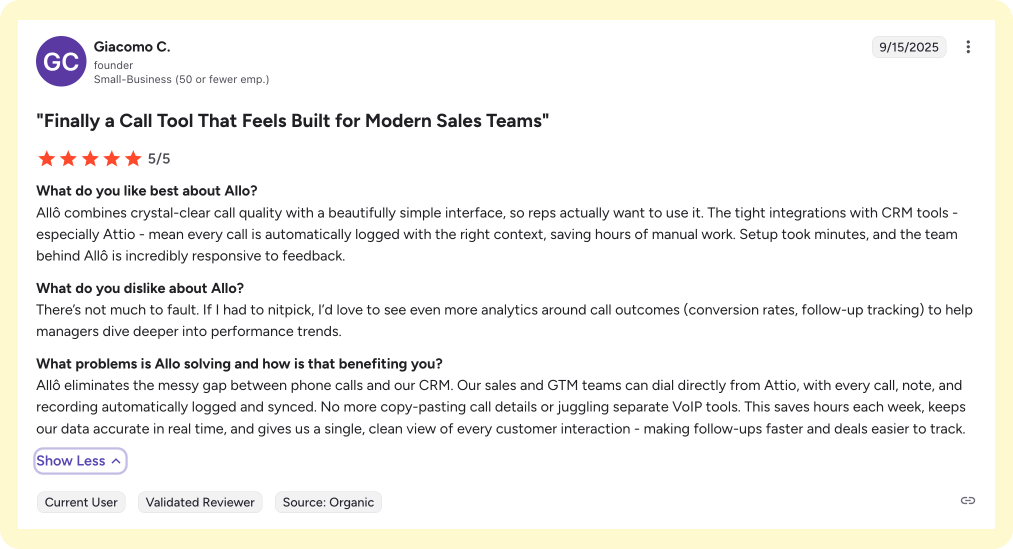
- Grasshopper on the other hand, has a score of 2 out of 5 on Trustpilot with frequent complaints about billing, cancellations, and unhelpful support.
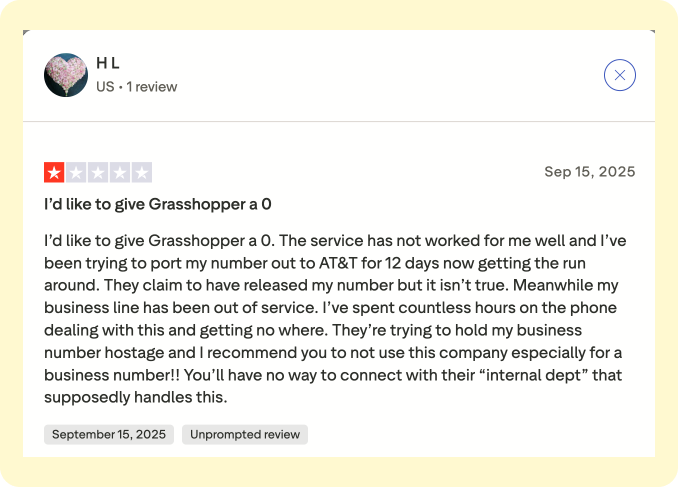
The difference in sentiment is clear. Grasshopper users complain about feeling stuck with unclear service, and Allo users highlight how easy it is to set up and how much admin time it saves.
Pricing
Grasshopper pricing:
- Solo: $18/month for 1 user, 1 number, 1 extension.
- Solo Plus: $32/month for 1 number and 3 extensions.
- Small Business: $70/month for 4 numbers, unlimited extensions.
What’s missing:
- No AI features
- No native integrations with major CRMs like HubSpot or Salesforce
- No public API for full automation
- Cancellation headaches (auto-renewals, hard to get a refund)
%2017.09.17.png)
Allo pricing:
- Starter: $18/month/1 user max with personalized greetings, spam protection, instant call summaries, call recording, AI receptionist.
- Business: $32/month/per user, and adds a second number, 1000+ integrations, team features, and call insights.
Why it matters:
- At $18/month, Grasshopper only gives you a phone number and some extensions.
- At $18/month, Allo already includes AI-powered call management.
- At $32/month, you get an AI receptionist, CRM sync, and team routing. Features Grasshopper doesn’t even offer at any tier.
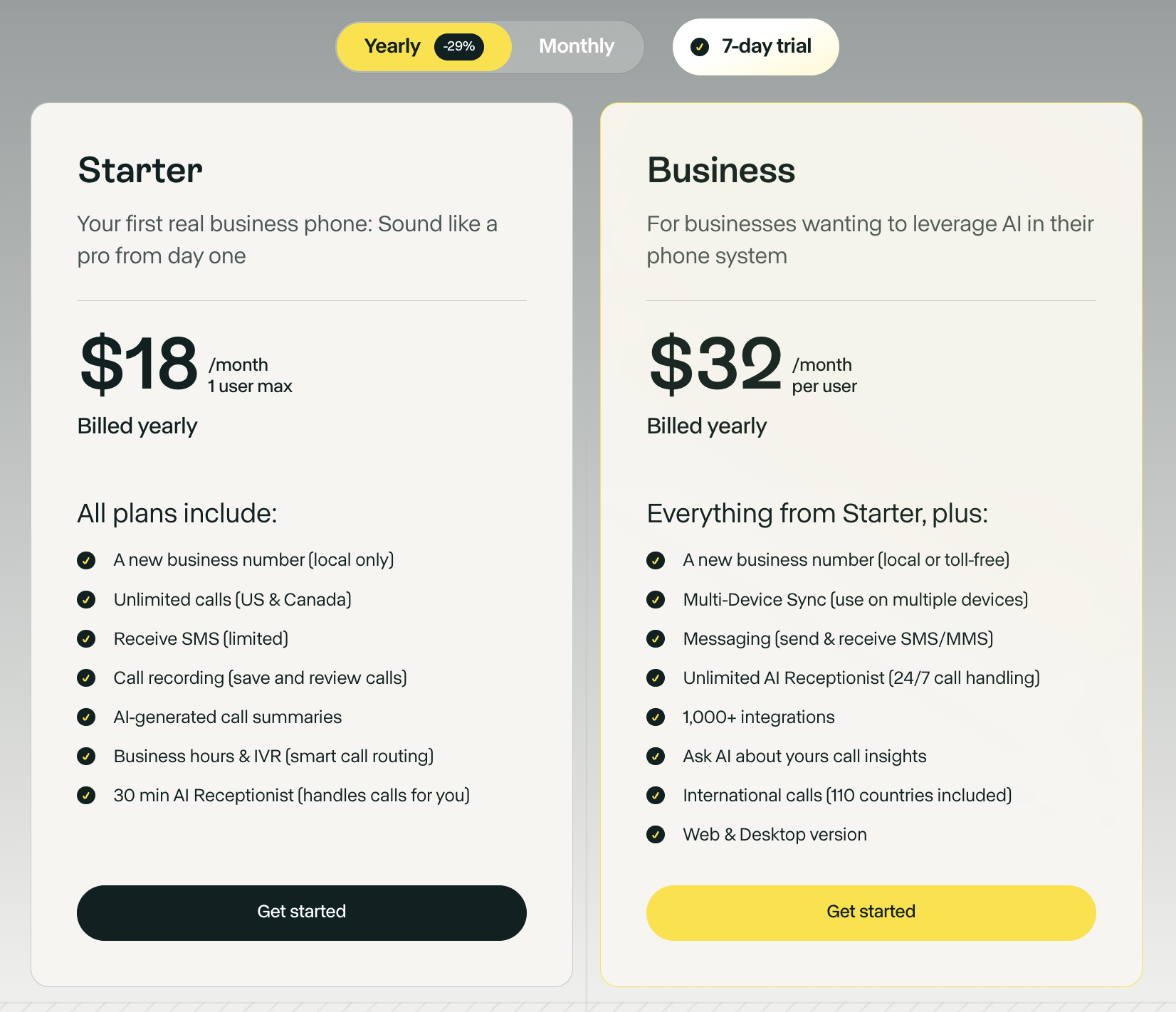
In conclusion, Allo is not just cheaper, it actually delivers more for less.
Demo
RingCentral vs. Grasshopper
Why Is RingCentral a Good Grasshopper Alternative?
Grasshopper markets itself as a “business phone system,” but in reality, it’s a basic second line with extensions. RingCentral, on the other hand, is a full Unified Communications (UCaaS) platform.
If you want more than just calls, think video meetings, team chat, advanced analytics, RingCentral is the right option for you.
The trade-off? RingCentral is powerful but designed for larger teams with a good budget. It’s not as mobile-first or lightweight as Allo, but it still beats Grasshopper if you want scalability.
Key Features: Where RingCentral Pulls Ahead
- Video Meetings & Team Messaging: RingCentral has video calls, team chat, file sharing, all in one platform.
- Advanced Analytics: RingCentral has real-time dashboards, and call analytics. Grasshopper only offers basic call logs.
- CRM & Business Integrations: RingCentral integrates with Salesforce, HubSpot, Microsoft 365, and more. Grasshopper has very limited integration options.
Reviews: What Other Users Think
RingCentral on G2 has a score of 4.1 out of 5, and it’s praised for its ease of use, rapid implementation, and feature depth.
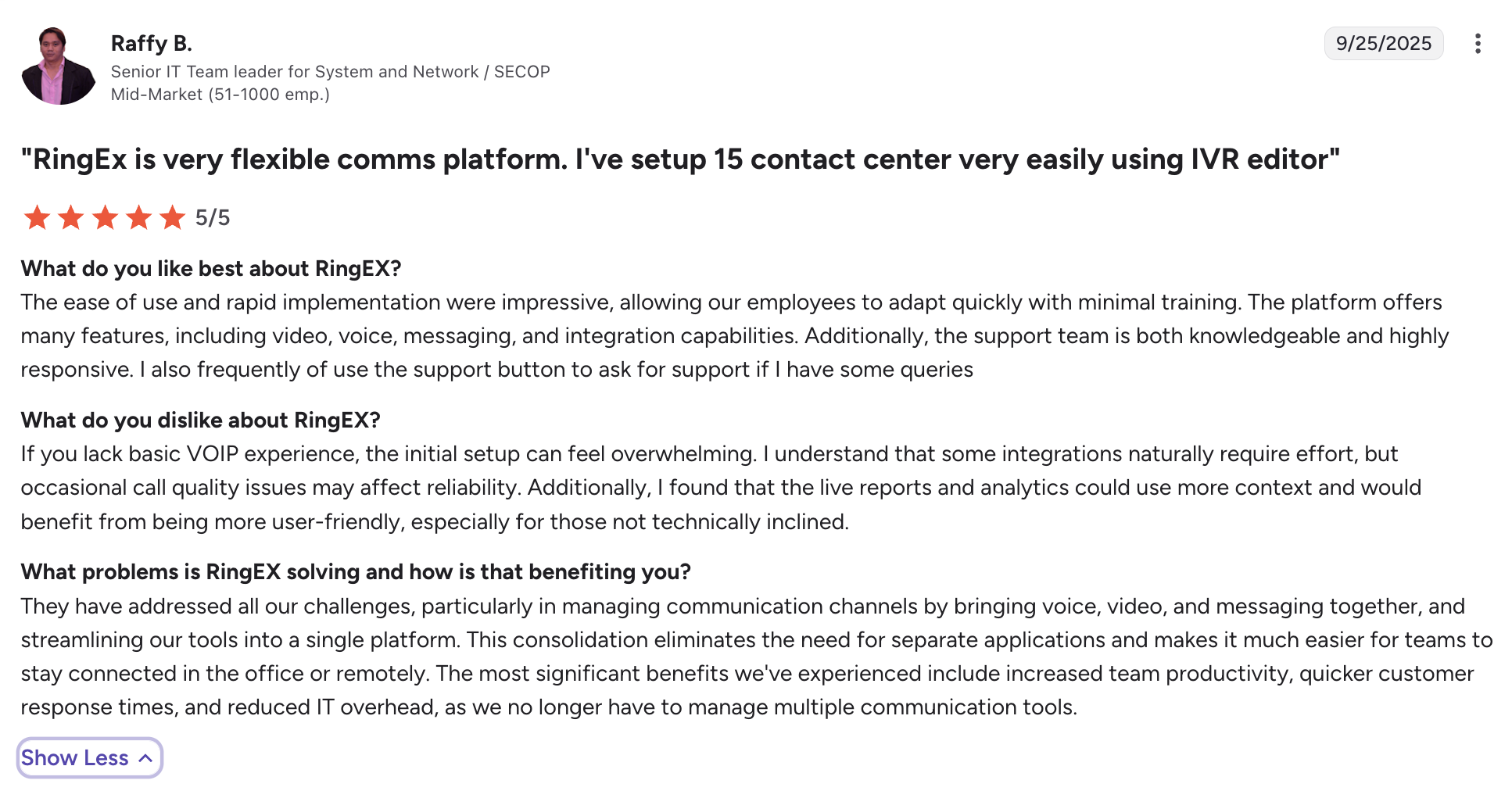
- Grasshopper on G2 has a score of 3.9 out of 5 on G2 with customers complaining about nightmare support, confusing signup, and aggressive billing practices.
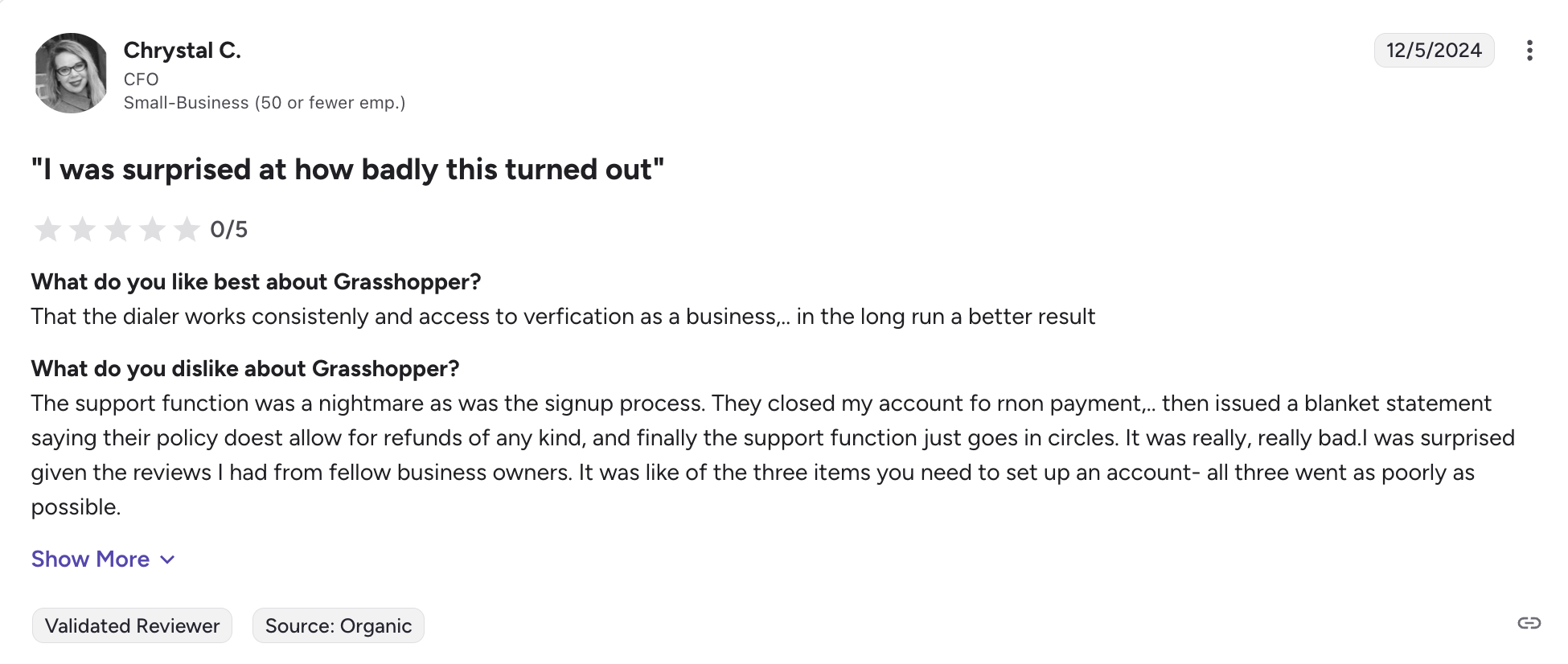
Pricing
Grasshopper Monthly Plans:
- Solo: $18/month for 1 user, 1 number, 1 extension.
- Solo Plus: $32/month for 1 number, 3 extensions.
- Small Business: $70/month for 4 numbers, unlimited extensions.
What you get: a phone number, voicemail transcription, call forwarding, and extensions. That’s it. No AI, no CRM integrations, no advanced analytics.
RingCentral Monthly Plans:
- Core: $30/user for phone, SMS, team messaging, video, basic analytics.
- Advanced: $35/user and it adds CRM integrations, advanced reporting, multi-site. support
- Ultra: $45/user with full UCaaS suite, unlimited AI meetings, device analytics, APIs.
What you get: a true all-in-one platform.
Allo Pricing (for comparison):
- Starter: $18/month for a business number, spam protection, instant call summaries, call recording, AI receptionist & IVR.
- Business: $32/month for AI transcriptions, call recording, smart routing, multi-device, 1000+ integrations & more.
Takeaway:
- Grasshopper looks cheap at first glance, but it’s very limited for the price.
- RingCentral is pricier but gives you voice, video, chat, and integrations in one place.
- Allo sits in the sweet spot: cheaper than both, but with modern AI features, integrations, clean UI, international calls, and more.
Demo
Quo vs. Grasshopper
Why Is Quo a Good Grasshopper Alternative?
Quo (formerly OpenPhone) stands out with a modern and fresh design. It is built for teams that live on Slack, HubSpot, or Google Workspace. It’s clean, collaborative, and makes it easy to share numbers across a team.
Grasshopper still gives you a phone number with extensions, but that’s basically where it stops. Quo actually feels like a communication hub, with shared inboxes, CRM integrations, and lightweight AI features.
Key Features: Where Quo Pulls Ahead
- Shared Inboxes: Multiple teammates can call, text, and manage a single number together. Grasshopper relies on extensions only, which feels clunky for teams.
- CRM & Workflow Integrations: OpenPhone plugs directly into HubSpot, Salesforce, Slack, and Zapier. Grasshopper has almost no integrations.
- AI Call Summaries & Transcriptions: Available at the higher tier. Grasshopper only does basic voicemail transcription.
Reviews: What Other Users Think
Quo on G2 has a score of 4.7 out of 5, it’s praised for its ease of setup, clean mobile app, and team collaboration features. Users highlight shared inboxes and integrations as game-changers for small sales teams.
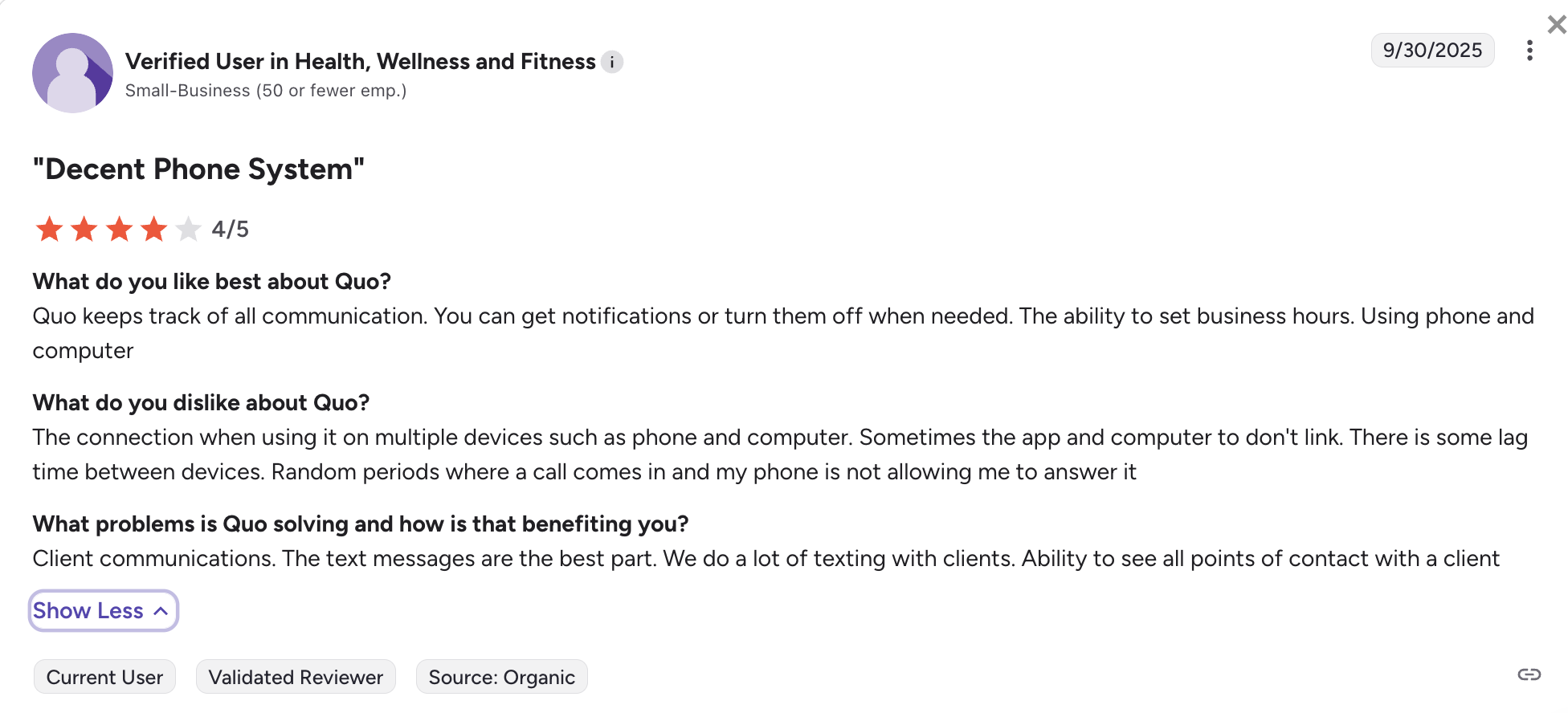
Pricing
OpenPhone Monthly Plans:
- Starter: $19/user/month for 1 local or toll-free number, unlimited calling/texting (US & Canada), voicemail transcripts, Slack & Zapier integrations.
- Business: $33/user/month plus AI call summaries, advanced integrations (HubSpot, Salesforce), group calling, analytics, and auto call recording.
Side by side: Grasshopper charges $32 for a single number with 3 extensions and no integrations, while Quo and Allo both offer collaboration and advanced features for less.
Demo
Google Voice vs. Grasshopper
Why Is Google Voice a Good Grasshopper Alternative?
Google Voice is the budget-friendly option for anyone already using Google Workspace.
If your team is on Gmail, Google Calendar, and Google Drive all day, Google Voice is the easiest way to add a business number without paying Grasshopper’s prices.
Compared to Google Voice, Grasshopper seems overpriced, especially when you realize that Google integrates Voice into its broader Workspace ecosystem.
Key Features: Where Google Voice Pulls Ahead
- Google Workspace Integration: calls, voicemails, and texts sync directly with Gmail and Google Calendar. Grasshopper has no native integrations.
- Searchable Voicemail Transcripts: tied to your Google account, easy to search and archive. Grasshopper only provides basic voicemail transcription.
- Low-Cost Global Calling: Voice supports international calling at Google’s rates, which are cheaper and more transparent than Grasshopper’s.
Reviews: What Other Users Think
Google Voice on G2 has a score of 4.1 out of 5, and a lot of users comment about its low cost, simplicity, and seamless integration with Google apps. Criticism mostly revolves around limited business features and weaker support.
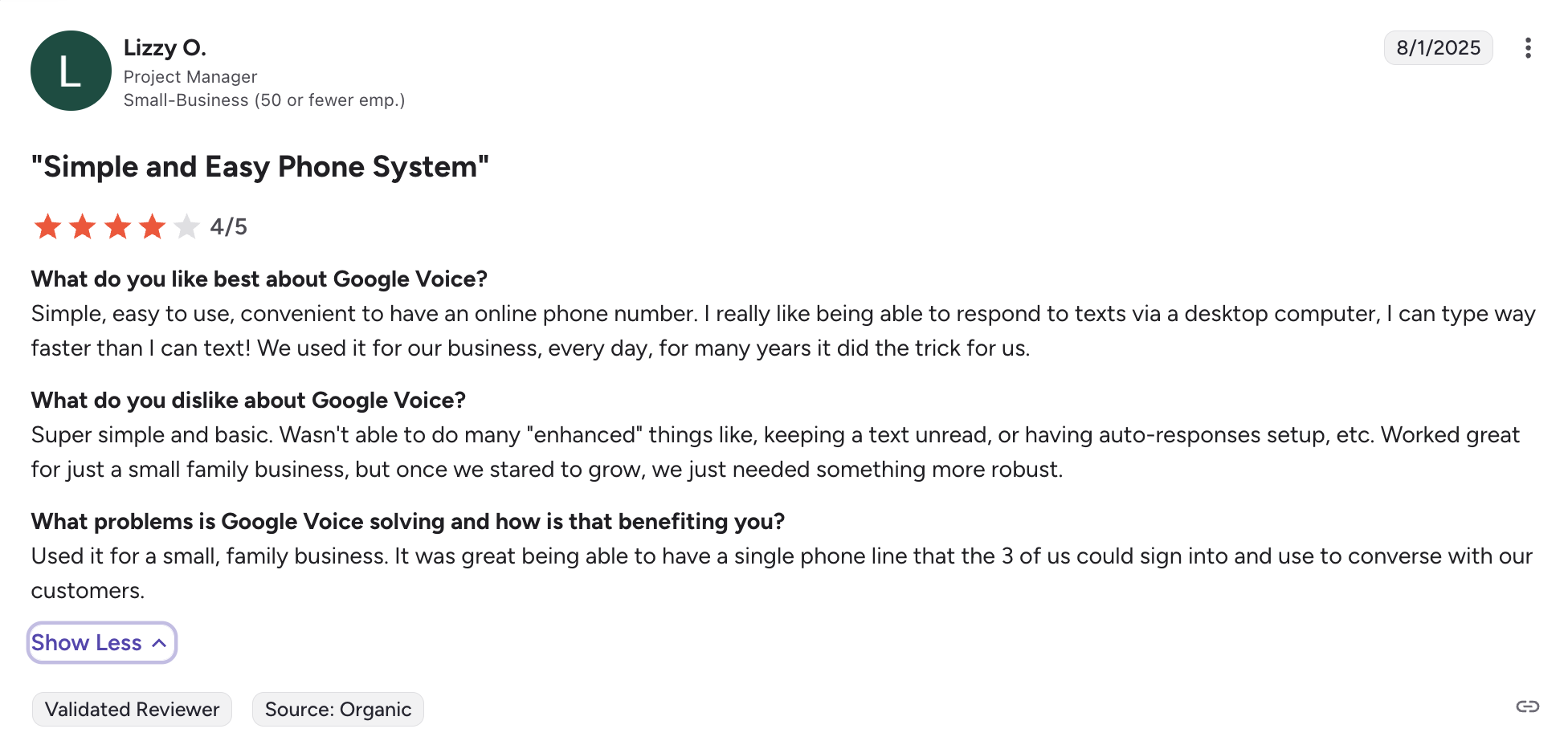
Pricing
Grasshopper charges $18 for a single number with no integrations, while Google Voice gives you Workspace integration, voicemail transcription, and auto attendants starting at just $10 per user. For Google Workspace users, switching is almost a no-brainer.
Google Voice Monthly Plans:
- Starter: $10/user and you’ll have 10 users max, US calling, voicemail transcription, Google Workspace integration
- Standard: $20/user and you’ll have unlimited users, multi-level auto attendant, ring groups, desk phone support
- Premier: $30/user, and it adds global locations, advanced reporting, and enterprise support
However, if you’re not already using Google Workspace, keep in mind that Google Voice requires a Google Workspace subscription in addition to your Google Voice plan to work.
Demo
Nextiva vs. Grasshopper
Why Is Nextiva a Good Grasshopper Alternative?
Nextiva is a professional-grade VoIP system with advanced call center and CRM features.
While Grasshopper is basically a virtual line with extensions, Nextiva gives you the kind of tools you’d expect to manage your internal and external communications. It has multi-level IVR, advanced call routing, and integrations with CRMs like Salesforce or HubSpot.
If you’re running a small but growing team and want to look like an enterprise from day one, Nextiva does that. Grasshopper, by contrast, feels bare-bones and quickly shows its limits.
Key Features: Where Nextiva Pulls Ahead
- Advanced Call Routing & IVR: Grasshopper has basic extensions; Nextiva has multi-level auto attendants and skills-based routing.
- CRM & Helpdesk Integrations: integrates with Salesforce, HubSpot, Zendesk, and more. Grasshopper doesn’t integrate with any of the leading CRMs.
- Team Collaboration Tools: Nextiva includes voice, SMS, video meetings, and team chat. Grasshopper is phone-only.
Reviews: What Other Users Think
Nextiva on G2 has a score of 4.5 out of 5. It is praised for its call quality, reliability, and strong support. Customers especially value its advanced call center features and integrations. Some note that the UI feels dated compared to lighter apps like OpenPhone or Allo, and cancelling the service can be complicated and time-consuming.
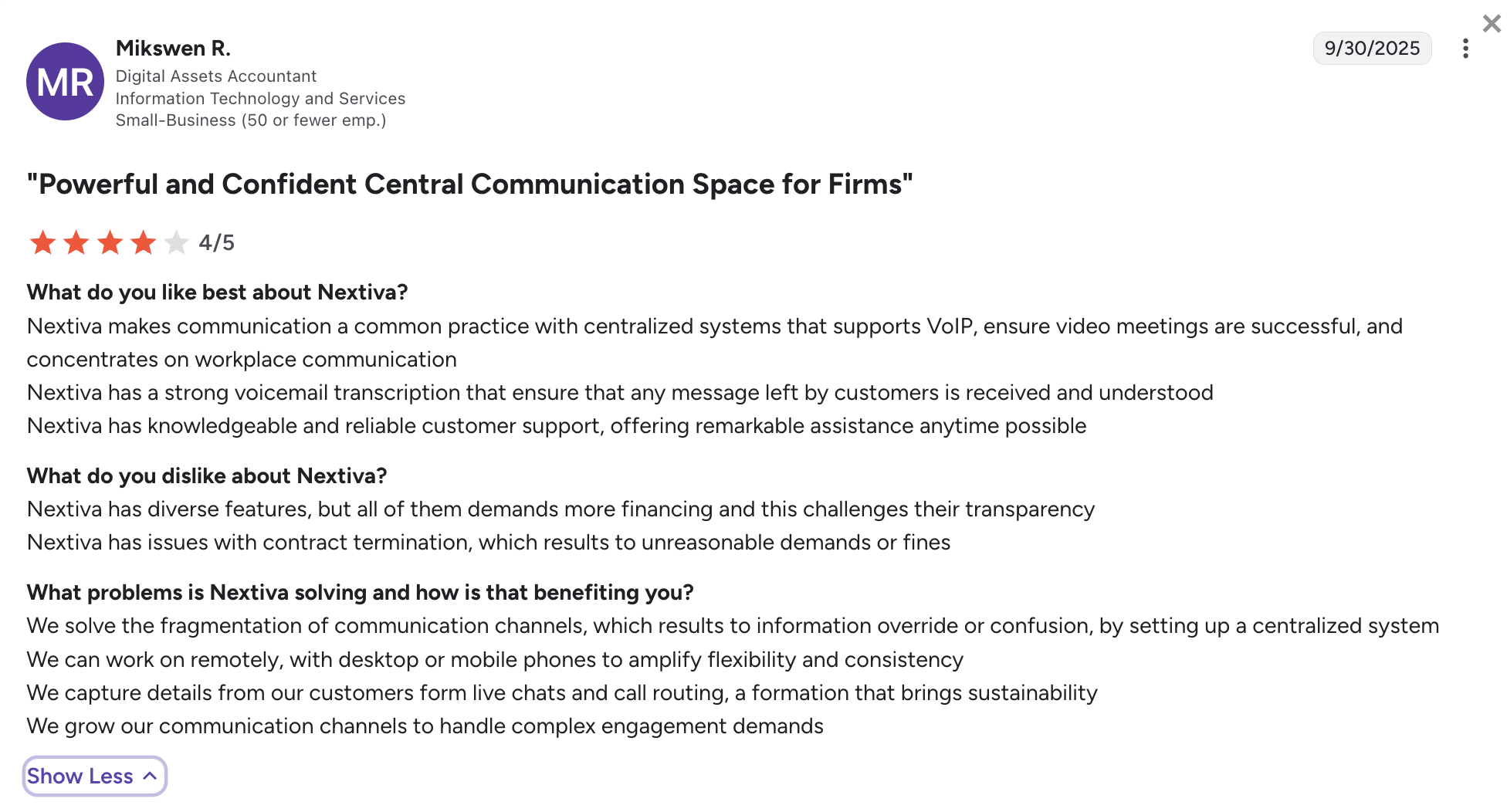
Pricing
Side by side:
- At $32, Grasshopper gives you just 1 number and 3 extensions with no integrations.
- At $23, Nextiva already offers video meetings, call routing, team & chat collaboration.
- At $50, Nextiva gives you enterprise-level features that Grasshopper doesn’t even try to match.
Demo
Zoom Phone vs. Grasshopper
Why Is Zoom Phone a Good Grasshopper Alternative?
Zoom Phone is built on the same platform you already use for video meetings.
If your team uses Zoom video, adding Zoom Phone is seamless. It gives you a cloud-based business line with modern features, tied directly into your Zoom’s ecosystem.
Grasshopper, on the other hand, gives you a business number and extensions, but not much else. Compared to Zoom Phone, it feels disconnected and limited.
Key Features: Where Zoom Phone Pulls Ahead
- Native Zoom Integration: calls, video, and meetings under one app. Grasshopper is phone-only.
- Global Coverage: Zoom Phone offers local numbers in 40+ countries. Grasshopper is US-only.
- Advanced Call Management: auto attendants, call queues, and monitoring are standard. Grasshopper only offers basic extensions and call forwarding.
Reviews: What Other Users Think
Zoom Phone on G2 has a score of 4.6 out of 5. Users comment about call quality, reliability, and smooth integration with Zoom Meetings. Some others note that setup can get tricky for larger teams, but overall reviews are positive.
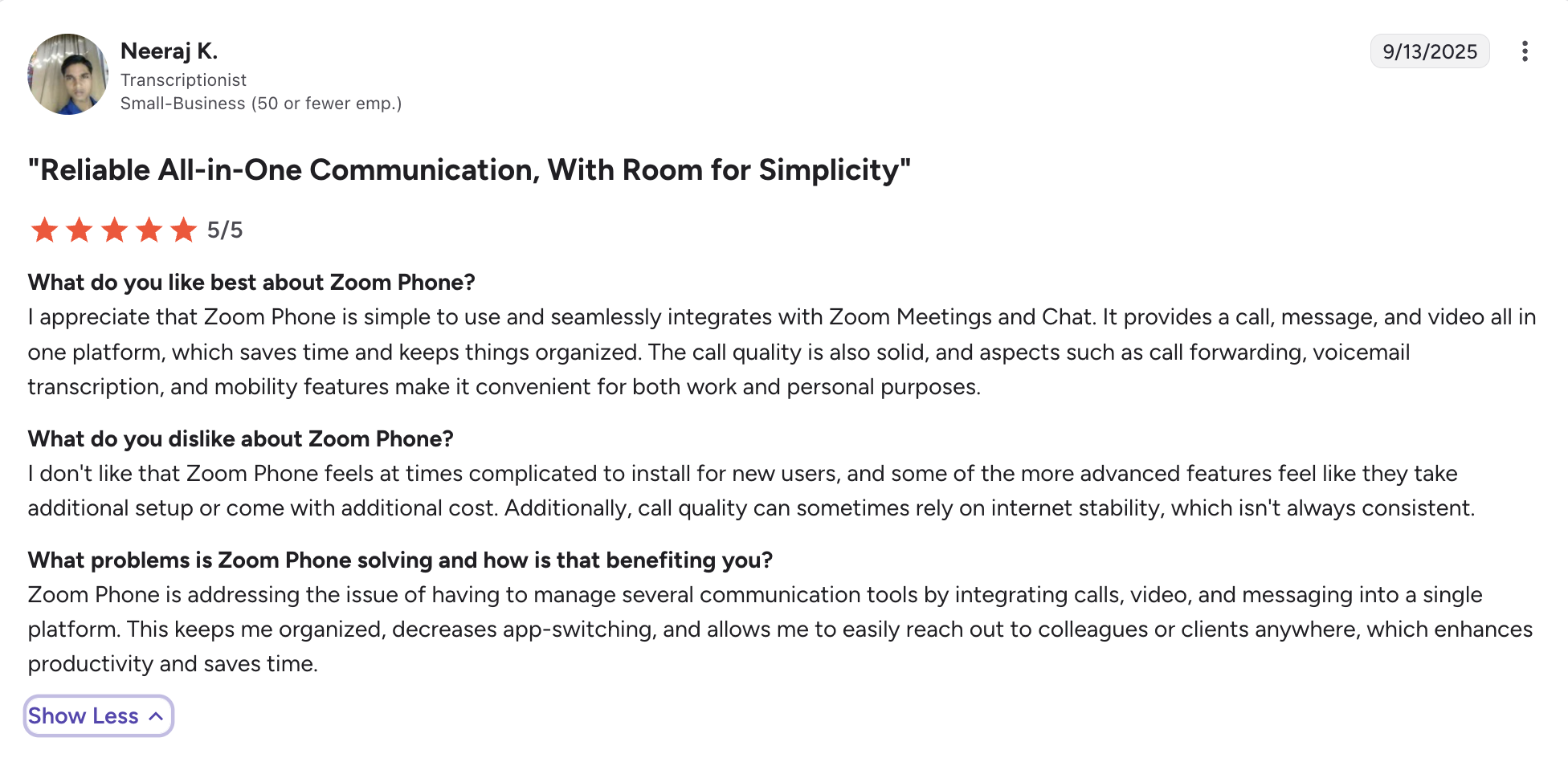
Pricing
- US & Canada Calling: $15/user and you get SMS & MMS domestic, online fax, and call summaries.
- Pro Plus: $21.99/user for unlimited domestic calling, and Zoom Workplace.
- Business Plus: $26.99 per user, with unlimited domestic calling, metered international calling, and integrations with Slack and Salesforce.
Side by side:
- At $18, Grasshopper gives you one number and extensions, with almost no advanced features.
- At $15–20, Zoom Phone gives you unlimited calling, auto attendants, integrations, and global numbers.
Demo
Frequently Asked Questions About Grasshopper Alternatives
[[faq-blog]]
Is VoIP worth it for small businesses?
Yes, absolutely. VoIP is cheaper than traditional phone lines and gives you modern features like voicemail transcription, call forwarding, and, in some cases, AI assistants. The catch is choosing the right provider: old-school options like Grasshopper don’t deliver much value anymore, while modern tools like Allo give you far more for the same price (or less).
What is the best VoIP service for small businesses?
It depends on what you need:
- Allo is best for teams who want a mobile-first, AI-powered phone system and CRM integrations.
- Quo (formerly OpenPhone) is best for teams who want shared inboxes and CRM integrations.
- RingCentral and Nextiva are best for larger teams that need a full UCaaS suite with analytics, video, and enterprise features.
Which is better, Google Voice or Grasshopper?
For most businesses, Google Voice is the better choice. It’s cheaper (starting at $10 compared to Grasshopper’s $18), integrates directly with Google Workspace, and includes auto attendants at higher tiers. Grasshopper provides a business line with extensions but lacks integrations, AI features, and has more frequent billing complaints. Unless you specifically need Grasshopper’s extension setup, Google Voice is the smarter option.
Who has the cheapest VoIP service?
- Zoom Phone starts at $10/month for a metered plan.
- Google Voice also starts at $10/month.
- Allo’s Starter plan is $18/month, but it includes an AI receptionist, spam blocking, and call summaries that you don’t get in cheaper options.
If you’re purely looking for the lowest price, Zoom Phone or Google Voice win. But if you want the most value per dollar, Allo’s $18/month plan gives you more features than Grasshopper, RingCentral, or Nextiva at similar or higher prices.




